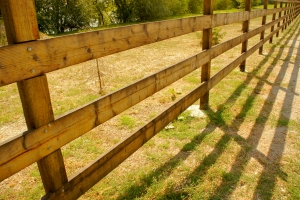 When you are ready to put up a fence, which type do you choose? Fences have two main factors that determine what type they are. These factors are height and how easy it is for you to be able to see through them. Fences today come in all sorts of materials, from wood to vinyl.
When you are ready to put up a fence, which type do you choose? Fences have two main factors that determine what type they are. These factors are height and how easy it is for you to be able to see through them. Fences today come in all sorts of materials, from wood to vinyl.
Take a look at five common fence types and see which one might be right for your home.
Picket Fence
Picket fences are nice, because they provide a barrier but allow your home to be seen, and allow you to see out. Picket fences are usually three or four feet high, and they get their name from the widely spaced pointed-top pickets. Picket fences discourage climbing, and their pointy shapes also keep the rain from pooling on the fence.
Lattice
Another fence that allows for some visibility is the lattice fence. Mostly, it obscures the view while allowing air and light to pass through. Made up of criss-crossing strips, this fence is a great backdrop for climbing plants, such as roses.
Vertical Board
A vertical board fence really works hard for your home. This is the fence you want if noise, wind, noisy neighbors or a bad view is a factor for you in your home. Overlapped or tightly fitted, this fence consist of tall vertical boards that keep everything out.
One downside to the vertical board fence is that is also blocks out breezes, which could be a fact in the summer or hot climates.
Post and Rail
Typically seen in rural or semi-rural areas, the post and rail fence is inexpensive. It consists of plain posts with three or four rails that are attached horizontally to the posts. Once used just for penning in livestock, the post and rail fence is a nice way to mark boundaries between properties.
Related Articles:
Three Furniture Placement Styles

